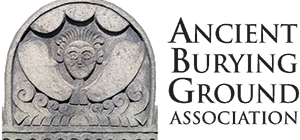The Burying Ground’s Early Years
Anyone who died during the four years after the first English settlers arrived in Hartford in 1636 was likely buried near the first meetinghouse, built that same year, roughly where the Old State House stands today. That first burying place may have been located on a small hill on what now is the lawn east of the Old State House and the area to the northeast. What happened to the remains of those buried there and any markers that were erected is unknown.
In 1640, the town of Hartford appropriated various parcels of land bounded on modern Main, Gold, and Pearl streets to serve as a burying ground. The Ancient Burying Ground today is located on part of that original allotment.
Between that year and the early 1800s, an estimated 5,000 to 6,000 people were laid to rest in the Ancient Burying Ground. Rich and poor, influential and powerless, old and young, free and enslaved, Native Americans, Africans, African Americans, immigrants from countries including England, France, Ireland, Scotland, Germany, Canada, and more came – they all came together in death here. The Ancient Burying Ground is the oldest historic site in Hartford, and the only one surviving from the 1600s.
For the next seventy years, just about anyone who died in what was then the town of Hartford (which at that time included modern East Hartford and West Hartford) was interred in the Ancient Burying Ground. A graveyard was opened in East Hartford in 1710, and in West Hartford in 1719.
Burials began to take place in 1773 in what today is known as Old South Cemetery on Maple Avenue in Hartford. But most people who died within the limits of the modern city of Hartford until the early 1800s still were laid to rest in the Ancient Burying Ground. In 1807 Old North Cemetery on Main Street was opened by the city, and individuals who died in Hartford were interred there.
The Ancient Burying Ground initially was, and continues to be, municipal land, controlled first by the Town and later the City of Hartford. It is a secular spot, over which the Congregational Church has no jurisdiction. It was a utilitarian space, evidenced by the fact that sometimes livestock were allowed to graze here. The practice of designing graveyards as landscapes that would double as green spaces and parks didn’t begin until after the Ancient Burying Ground was no longer being used.
